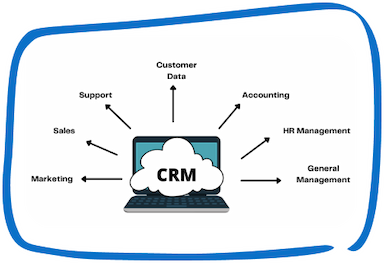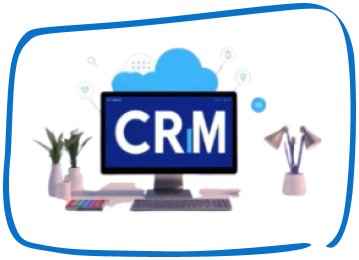According to academics, enterprise resource planning (ERP) initiatives fail at a rate of 50% or more, and around half of all projects are problematic. Poor deployment may necessitate weeks, if not months, of troubleshooting and backtracking before you begin to see a return on your investment. After selecting an ERP solution, the second most critical stage is likely to be selecting an appropriate method or technique for ERP tool deployment. As a result, it is critical to understand the most prevalent ERP tool implementation issues and how to prevent them in order to build a plan that is conducive to an effective ERP solution deployment. lets overview 10 ERP software Mistakes to Avoid.
ERP software
Enterprise resource planning solutions were in development to eliminate inefficiencies and communications concerns in enterprises. During the study, the old inefficient processes are also in development since an ERP software built to conduct inefficient operations would continue to be inefficient. However, the sparkling new features offered by various ERP software vendors are sometimes overwhelming to decision-makers, leading them to make incorrect selections based on hazy principles.
ERP tool deployment and working can take a toll on your organization’s work process temporarily. But on the bright side, you get to automate everything in the process to reduce manual practices; above to run your business efficiently. But again if there is a mistake or even a small error while the process or while the functioning of the ERP software, it could cost you your business to some extent. Hence here are 10 ERP software mistakes to avoid while using ERP software.
10 ERP software Mistakes to Avoid
Poor planning and an unreasonable timetable
When you’re ready to make a change, it’s natural to want to see results right away. Successful ERP tool installation, on the other hand, takes time. Because ERP tools are so full of complications, it is critical to create a timetable that explains your team’s time commitment. Using an agile approach, involve end users in each phase of determining requirements. Additionally, testing, identifying gaps and repeating. Establish appropriate deadlines.
Not utilizing the best options
When issuing RFPs for a new ERP solution, each vendor will almost certainly respond by claiming to offer a module for practically every function you’ve ever thought of, and some you haven’t. This may lead to the desire to discard established point items that are doing admirably. Alternatively, if the ERP tool provider claims to be able to execute CRM duties, there may be a temptation to ditch the present CRM software in order to consolidate into a single platform and save money.
Maintenance Negligence
Work does not cease when your ERP solution goes live. Businesses should have a maintenance strategy. A formal approach ensures that users get information on how to maintain and improve the ERP tool on a regular basis so that it does not become old or obsolete. With a well-defined plan, you can control any security concerns and gaps in business operations, as well as ensure that the ERP solution is always up to date with the most recent apps and functions effectively.
Not completely gathering prerequisites
ERP tools are heavily dependent on an organization’s thorough functioning and process flow, hence it is the obligation of business stakeholders to offer a detailed description of every processing flow followed in the company to business analysts. Business analysts must now transform these process flows into diagrams and pinpoint the gaps in these process flows. A qualified business analyst say easily do this with business process modeling diagrams. Additionally, offer a better process flow to business stakeholders that can be in use to close these gaps.
On-premises vs. Cloud ERP: Which is the Better Option?
When adopting an ERP solution, one of the most important decisions is whether to put it on-premises or in the cloud. Several considerations are necessary, including infrastructure, customization, compliance, security, and storage. Even though cloud-based ERPs have several advantages, choosing a cloud deployment might be a mistake if your firm requires complex modifications. Furthermore, using Cloud ERP software need constant access to a stable internet connection. Before proceeding with the creation of an ERP solution, it is critical to analyze the benefits. Also, drawbacks of each deployment approach. The structure of your company, unique business requirements, and the type and design of the ERP tool itself are all important considerations.
Ignore Workforce Training
The simplest and most successful method to prepare everyone for the new ERP solution is to make training role-specific and situational. The training should enable your employees to execute real simulations in order to better grasp the ERP solution. Most ERP software suppliers provide users with free training. Ensure that all of your users are adequately taught to utilize the ERP. Furthermore, training should cover all of the ERP solution’s functions.
Creating industry-specific ERP
The lack of an industry-specific ERP tool will make it more difficult for your staff to submit process flow entries, and they may not transition to this newly enhanced procedure. Instead of bothering customers with an overly sophisticated ERP solution, select a software solution provider. Particularly, who offers your industry-specific ERP solution, or resorts to a bespoke ERP solution development business. A pre-built ERP tool can never outperform software that is individually designed for your company.
Failure to Consider Compliance Issues
An ERP solution, like any other business management software, should follow industry regulations and other compliances. When looking for an ERP software in Dubai, UAE, make sure it is VAT-enabled and FTA-approved.
Failure to Pay Attention to Data Sources
An ERP solution can only function with precision and efficiency. Only if the data it is supplied is accurate and of high quality. If you do not evaluate the data source, it will disclose data gaps. Moreover, identify the data you need to run your business. Consider an ERP tool vendor who can host your data in the cloud or on-premise.
Not recognizing locations that require modification
According to Crigger of Preferred Strategies, the evident trend in ERP is toward uniformity rather than personalization. Even if an organization achieves 80% standardization, 20% of business processes must be customized. At that moment, businesses must make a difficult decision. Something like should we go through the agony of customizing or do we modify the process? Such decision points must be recognized and addressed.
Conclusion
ERP system deployment is one of the most important projects you can do for your company. Best practices for ERP deployment enhance customer experience, increase sales, optimize manufacturing processes, and save resources, money, and time.
Several firms make errors before, during, and after ERP installation, resulting in lower efficiency and production. Avoiding these common missteps will help you achieve your business goals and, eventually, grow your company.
And we help you with just the same. Our ERP software implementation and effective custom solutions are like a one-stop solution for you and your business. Contact penieltech today to know more.
Speak with Our Team!
4.9 Stars
1k+ reviews on






